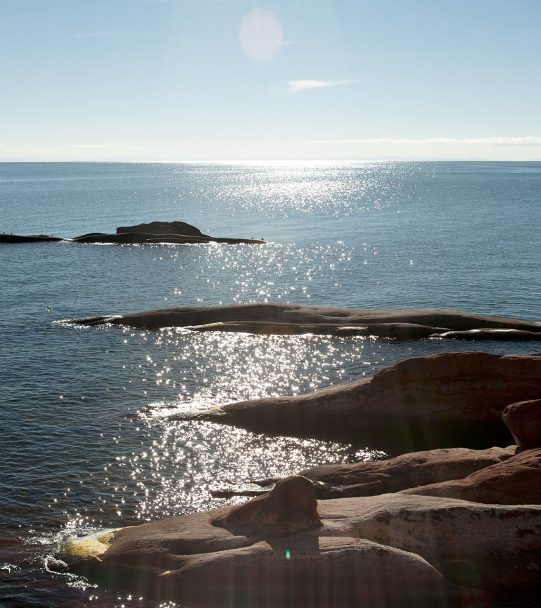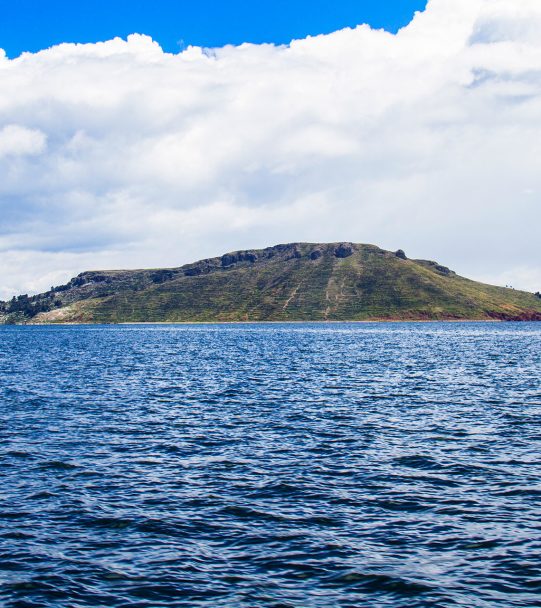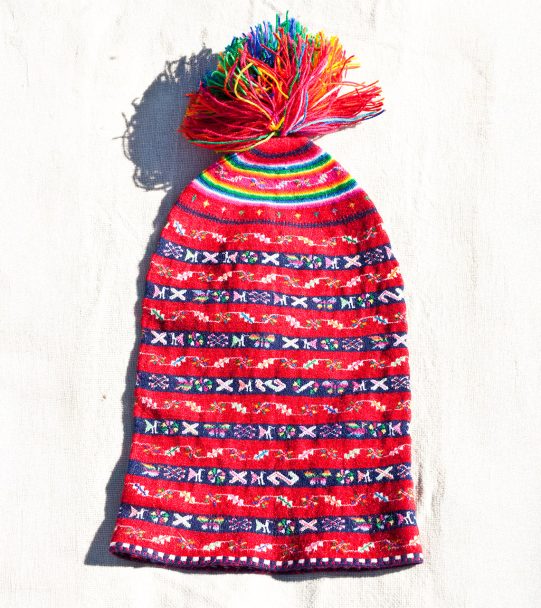Puno
The department of Puno, in the southern highlands of the Peru, The department of Titicaca awaits you with a unique combination of landscapes, living culture and Andean spirituality. With Lake Titicaca as a protagonist, floating islands built with totora reeds and traditions that have been maintained since ancient times, this department has it all. Its capital, Puno, «The Capital of Peruvian Folklore» preserves a strong cultural identity reflected in dances, clothing and festivities. Puno offers millenary history, genuine hospitality and stunning natural scenery, making it an unforgettable destination for those seeking authentic experiences in the Peruvian Andes.
Connectivity
You can reach the department of Puno by road by private vehicle or bus through routes that connect Puno, its capital city, with major or nearby cities such as Arequipa and Lima, the trip takes between 6 and 23 hours respectively. For those who prefer to fly, the Inca Manco Capac International Airport in Juliaca, 40 km from the center of the city of Puno, offers regular flights from Lima facilitating quick and convenient arrival for visitors.
Puno
Subscribe to receive news about Caminos Andinos
Temperature
From 0°C to 18°C
Weather
Cold and dry
More destinations
Activities and attractions
Puno invites you to discover a department where living history, Andean spirituality and the landscapes of the altiplano come together in a unique experience. Walk through its historic center with the Cathedral of Puno and museums that preserve its legacy, and delve into the great pre-Hispanic centers of Sillustani and Pukara. Sail Lake Titicaca to islands such as Taquile and Amantani, or visit Juli, with its unique colonial temples. Explore high Andean trails, stone forests and snow-capped mountains in Carabaya. Share life with Quechua and Aymara communities, and celebrate with them the Virgin of Candelaria, Pachamama or Qhapaq Raymi. Enjoy the chairo, the Titicaca trout, the cancacho and traditional textiles such as chullos and monteras. Puno is identity, nature and tradition in the heart of the altiplano.
Interior of the Templo Museo de la Asunción or Santa María la Mayor, in the district of Juli
PHOTO: PROMPERÚ
Suasi Island in Lake Titicaca
PHOTO: PROMPERÚ
Suasi Island in Lake Titicaca
PHOTO: PROMPERÚ
Umayo Lagoon
PHOTO: PROMPERÚ
Mummy of the Tiahuanaco culture in the Kampac museum
PHOTO: PROMPERÚ
Morenada during the festivity of the Virgen de la Candelaria
PHOTO: PROMPERÚ
Musicians from Taquile Island in Lake Titicaca
PHOTO: PROMPERÚ
Trout Dish at Taquile Island in Lake Titicaca
PHOTO: PROMPERÚ
Puno, Torito de Pukará
PHOTO: PROMPERÚ
Handicrafts in the Uros Islands
PHOTO: PROMPERÚ
Discover what we do
-
-
CULTURE
Puno City: Museums and culture
The historic center of Puno invites you to explore its living past among colonial streets, carved balconies and emblematic monuments. Here stands the imposing Cathedral of Puno, an Andean baroque jewel, next to the San Juan Bautista Church, home of the venerated Virgin of Candelaria. Discover the Carlos Dreyer Museum and the Museum of Coca and Customs, which preserve the cultural legacy of the highlands. Visit the historic Deustua Arch, built in honor of the martyrs of the independence and complete the tour in the best viewpoints of Puma Uta and Casa del Condor (Kuntur Wasi), icon of the Andean spirit.
Great pre-Hispanic civilizations:
In Puno, two impressive archaeological sites connect you with the pre-Hispanic history of the altiplano. Sillustani, on the shores of the Umayo lagoon, stands out for its chullpas, funerary towers built by the Colla culture and also used by the Incas. A few kilometers away, the archaeological complex of the Pukara culture invites you to discover one of the oldest centers of the southern Andes, with monolithic sculptures, stepped pyramids and a museum that reveals the cultural richness of this pre-Inca civilization. In Carabaya, accompanied by a guide, discover the rock art visiting the cave painting gallery of Isvilla and Corani, ancient paintings that reveal scenes of ancient Andean life in natural landscapes of breathtaking beauty.
The textile art of Taquile: UNESCO World Heritage Site
On Taquile Island, in Lake Titicaca, textile art not only dresses, but also communicates and preserves the Andean identity. Recognized by UNESCO as a Intangible Cultural Heritage of Humanity, This ancestral knowledge is expressed in weavings handmade by the villagers themselves. Their garments stand out for the precision in the stick weaving, the intense colors, the geometric designs and their deep social meaning, making Taquile a cultural reference of the highlands.
City of Juli: America's Little Rome
Discover the city of Juli, known as “The little Rome of America”, a cultural treasure on the banks of the Titicaca. Immerse yourself in its colonial splendor visiting the Temple Museum Nuestra Señora de la Asunción and the Temple Museum San Juan de Letrán. Explore also the San Pedro Martir Temple and the Oscar Velazco Meza Municipal Museum, admiring its architecture, history and valuable heritage. Walk through its streets and feel the deep religious and artistic heritage of this city located in the highlands. An unmissable trip to Puno's past.
-
-
NATURE
Lake Titicaca and its islands:
Lake Titicaca, the highest lake in the world and shared by Peru and Bolivia, offers you on the Peruvian side an unforgettable experience between altiplanic landscapes and living cultures. Navigate its waters to the floating islands of the Uros, built entirely of totora reeds and inhabited by communities that preserve ancestral traditions. Continue to Taquile Island, famous for its textile art recognized by UNESCO and its communal organization. Then visit Amantaní Island, where you can spend time with local families, participate in rituals and walk to the sacred hills of Pachatata and Pachamama.
Exploration and bird watching trails:
In Puno, the nature invites you to live unique experiences. In the Umayo lagoon, next to Sillustani, you can enjoy boat rides, scenic hikes and high Andean bird watching in an environment of great tranquility. In the Pacunasa Stone Forest, also called the “Gothic City of Macusani”, you can walk along trails among rock formations ideal for photography and trekking. And in the snow-capped Allincapac, in the Cordillera de Carabaya, venture into high mountain hiking, glacier observation and contact with unique high Andean ecosystems.
-
-
ANCESTRAL COMMUNITIES AND RURALITY
Indigenous communities and peoples:
In the department of Puno, the ancestral Quechua and Aymara communities keep their roots alive through their language, clothing, music and worldview. On the shores of the Titicaca and in the high Andean zones, these communities are communities offer an authentic experience. The Aymara are located mainly in areas near Lake Titicaca, such as Chucuito, Ilave and Juli, where they preserve their rituals and traditional practices. The Quechuas predominate in provinces such as Azángaro, Melgar and Taquile Island, known for its communal organization and textile art. Through experiential tourism, it is possible to share daily life with local families, learn about their relationship with the local people, and learn about their relationship with the local culture. nature and be part of a culture that has endured for centuries in the heart of the altiplano.
Holidays:
Puno celebrates its Andean identity through unique festivities that dazzle with color, spirituality and tradition. In February, the Festivity of the Virgen de la Candelaria fills the streets with music, dances and devotion, being recognized as a World Heritage Site by UNESCO, brings together thousands of dancers and musicians in honor of the patron saint of the city. In August, the Pachamama Festival honors Mother Earth with offerings and ancestral rituals. In December, the Qhapaq Raymi marks the solstice with ceremonies that renew the link with nature. And between February and March, the rural carnivals, community joy thanks life and the harvest with music and celebration.
-
-
GASTRONOMY
Get ready to savor the best of the Altiplano cuisine with the most representative dishes of Puno. Start with chairo, a thick and comforting soup made with lamb, chuño, potatoes and Andean herbs. Enjoy the cancacho puneño, lamb or beef meat marinated and baked slowly until juicy and aromatic. Try the traditional huatia, cooked underground with hot stones, in an ancestral ritual full of flavor. Delight yourself with the quinoa fish, creamy and nutritious, or with the fried trout from Titicaca, crispy and fresh. In Puno, each dish connects you with its history and living tradition.
-
-
CRAFTS
In Puno, handicrafts connect you with the Andean essence in forms full of color and meaning. The Toritos de Pucará, ceramic figures that symbolize protection and prosperity, stand out. The alpaca weavings, made on traditional looms, reflect the ancestral cosmovision. Aymara women transform totora reeds into baskets and sculptures, and hand-carved instruments such as panpipes and charangos keep alive the music and cultural identity of the highlands.
Montera: Andean natural fibers hats
In Puno, the montera hat is one of the most representative expressions of women's traditional dress. Used especially by Aymara women during festivities such as the Virgen de la Candelaria, it stands out for its circular shape, colorful ornaments and embroidery that reflect identity and cultural pride. More than an accessory, the montera symbolizes status, community belonging and the continuity of a living heritage that is transmitted from generation to generation.
Chullos de Taquile: Andean weavings
On Taquile Island, the chullos not only shelter, they also communicate identity. Recognized by UNESCO as part of the intangible textile art, These Andean hats, knitted by men, employ millenary techniques. Each color and pattern indicates age, marital status and social role. Made with sheep or alpaca wool, they are unique pieces that reflect tradition, pride and community cohesion in the heart of Puno.
CULTURE
Puno City: Museums and culture
The historic center of Puno invites you to explore its living past among colonial streets, carved balconies and emblematic monuments. Here stands the imposing Cathedral of Puno, an Andean baroque jewel, next to the San Juan Bautista Church, home of the venerated Virgin of Candelaria. Discover the Carlos Dreyer Museum and the Museum of Coca and Customs, which preserve the cultural legacy of the highlands. Visit the historic Deustua Arch, built in honor of the martyrs of the independence and complete the tour in the best viewpoints of Puma Uta and Casa del Condor (Kuntur Wasi), icon of the Andean spirit.
Great pre-Hispanic civilizations:
In Puno, two impressive archaeological sites connect you with the pre-Hispanic history of the altiplano. Sillustani, on the shores of the Umayo lagoon, stands out for its chullpas, funerary towers built by the Colla culture and also used by the Incas. A few kilometers away, the archaeological complex of the Pukara culture invites you to discover one of the oldest centers of the southern Andes, with monolithic sculptures, stepped pyramids and a museum that reveals the cultural richness of this pre-Inca civilization. In Carabaya, accompanied by a guide, discover the rock art visiting the cave painting gallery of Isvilla and Corani, ancient paintings that reveal scenes of ancient Andean life in natural landscapes of breathtaking beauty.
The textile art of Taquile: UNESCO World Heritage Site
On Taquile Island, in Lake Titicaca, textile art not only dresses, but also communicates and preserves the Andean identity. Recognized by UNESCO as a Intangible Cultural Heritage of Humanity, This ancestral knowledge is expressed in weavings handmade by the villagers themselves. Their garments stand out for the precision in the stick weaving, the intense colors, the geometric designs and their deep social meaning, making Taquile a cultural reference of the highlands.
City of Juli: America's Little Rome
Discover the city of Juli, known as “The little Rome of America”, a cultural treasure on the banks of the Titicaca. Immerse yourself in its colonial splendor visiting the Temple Museum Nuestra Señora de la Asunción and the Temple Museum San Juan de Letrán. Explore also the San Pedro Martir Temple and the Oscar Velazco Meza Municipal Museum, admiring its architecture, history and valuable heritage. Walk through its streets and feel the deep religious and artistic heritage of this city located in the highlands. An unmissable trip to Puno's past.
NATURE
Lake Titicaca and its islands:
Lake Titicaca, the highest lake in the world and shared by Peru and Bolivia, offers you on the Peruvian side an unforgettable experience between altiplanic landscapes and living cultures. Navigate its waters to the floating islands of the Uros, built entirely of totora reeds and inhabited by communities that preserve ancestral traditions. Continue to Taquile Island, famous for its textile art recognized by UNESCO and its communal organization. Then visit Amantaní Island, where you can spend time with local families, participate in rituals and walk to the sacred hills of Pachatata and Pachamama.
Exploration and bird watching trails:
In Puno, the nature invites you to live unique experiences. In the Umayo lagoon, next to Sillustani, you can enjoy boat rides, scenic hikes and high Andean bird watching in an environment of great tranquility. In the Pacunasa Stone Forest, also called the “Gothic City of Macusani”, you can walk along trails among rock formations ideal for photography and trekking. And in the snow-capped Allincapac, in the Cordillera de Carabaya, venture into high mountain hiking, glacier observation and contact with unique high Andean ecosystems.
ANCESTRAL COMMUNITIES AND RURALITY
Indigenous communities and peoples:
In the department of Puno, the ancestral Quechua and Aymara communities keep their roots alive through their language, clothing, music and worldview. On the shores of the Titicaca and in the high Andean zones, these communities are communities offer an authentic experience. The Aymara are located mainly in areas near Lake Titicaca, such as Chucuito, Ilave and Juli, where they preserve their rituals and traditional practices. The Quechuas predominate in provinces such as Azángaro, Melgar and Taquile Island, known for its communal organization and textile art. Through experiential tourism, it is possible to share daily life with local families, learn about their relationship with the local people, and learn about their relationship with the local culture. nature and be part of a culture that has endured for centuries in the heart of the altiplano.
Holidays:
Puno celebrates its Andean identity through unique festivities that dazzle with color, spirituality and tradition. In February, the Festivity of the Virgen de la Candelaria fills the streets with music, dances and devotion, being recognized as a World Heritage Site by UNESCO, brings together thousands of dancers and musicians in honor of the patron saint of the city. In August, the Pachamama Festival honors Mother Earth with offerings and ancestral rituals. In December, the Qhapaq Raymi marks the solstice with ceremonies that renew the link with nature. And between February and March, the rural carnivals, community joy thanks life and the harvest with music and celebration.
GASTRONOMY
Get ready to savor the best of the Altiplano cuisine with the most representative dishes of Puno. Start with chairo, a thick and comforting soup made with lamb, chuño, potatoes and Andean herbs. Enjoy the cancacho puneño, lamb or beef meat marinated and baked slowly until juicy and aromatic. Try the traditional huatia, cooked underground with hot stones, in an ancestral ritual full of flavor. Delight yourself with the quinoa fish, creamy and nutritious, or with the fried trout from Titicaca, crispy and fresh. In Puno, each dish connects you with its history and living tradition.
CRAFTS
In Puno, handicrafts connect you with the Andean essence in forms full of color and meaning. The Toritos de Pucará, ceramic figures that symbolize protection and prosperity, stand out. The alpaca weavings, made on traditional looms, reflect the ancestral cosmovision. Aymara women transform totora reeds into baskets and sculptures, and hand-carved instruments such as panpipes and charangos keep alive the music and cultural identity of the highlands.
Montera: Andean natural fibers hats
In Puno, the montera hat is one of the most representative expressions of women's traditional dress. Used especially by Aymara women during festivities such as the Virgen de la Candelaria, it stands out for its circular shape, colorful ornaments and embroidery that reflect identity and cultural pride. More than an accessory, the montera symbolizes status, community belonging and the continuity of a living heritage that is transmitted from generation to generation.
Chullos de Taquile: Andean weavings
On Taquile Island, the chullos not only shelter, they also communicate identity. Recognized by UNESCO as part of the intangible textile art, These Andean hats, knitted by men, employ millenary techniques. Each color and pattern indicates age, marital status and social role. Made with sheep or alpaca wool, they are unique pieces that reflect tradition, pride and community cohesion in the heart of Puno.
 Skip to content
Skip to content





















